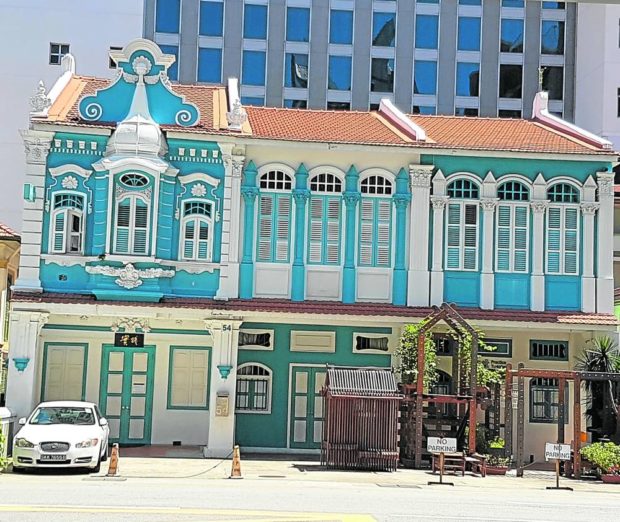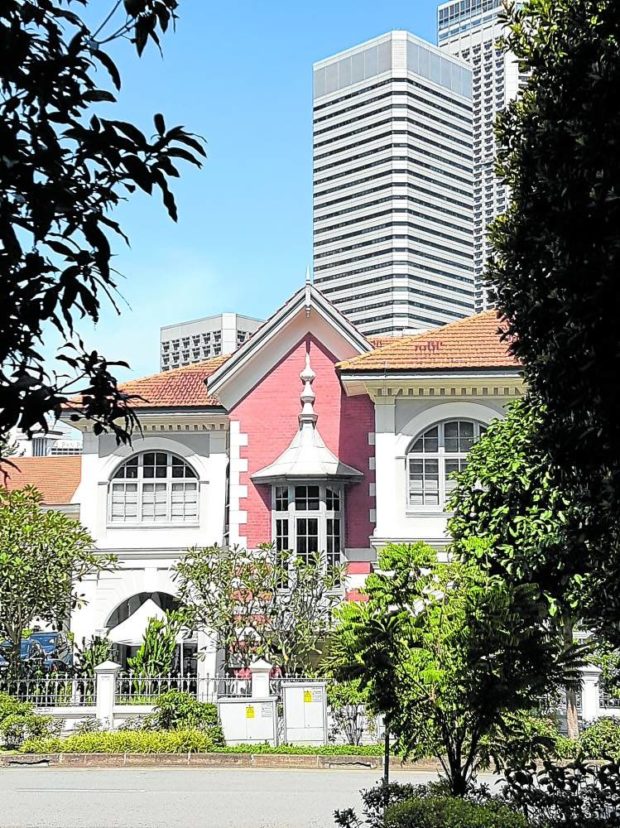Authenticity of our place

The façade of shophouses is retained, while the interior spaces exhibit building adaptive reuse.
—Photos by Ar. Amado de Jesus
Half of the world’s population now live in cities, and we are getting more conscious of the contribution we all make from what our great grandparents left us, and what we shall leave behind to our grandchildren.
The city is not just a place of sites and monuments or natural elements. There are also intangible aspects like its history, events and communities. Each of us has personal memories that give meaning to our city. For those of my generation, we have shared memories of our youth spent in the movie houses in Escolta and Rizal Avenue.
Today we discuss the way our history is being revisited. Let us also look at our sense of place in the city we live in, its history and structures.
Place heritage
What do we consider place heritage, or the buildings and sites that our city is proud of? What are the heritage properties, the monuments and buildings that we preserve for historical, architectural, cultural and natural timelessness? These places affect our sense of place and attachment to our city.
In years past, heritage conservation was done without much relationship with the surrounding landscape. Big cities today develop their place heritage with a strong intertwining between the natural and intangible aspects.
Article continues after this advertisement
The framework for redevelopment and conservation is multi-dimensional to include buildings, traffic patterns, streetscapes, open spaces and views.
We focus today on the authenticity of news and even of historical movies. Let us also try to retain authenticity of place in our cities for us to know who we are, and for us to foster a strong sense of belonging. Let us conserve and protect a good set of values that the best members in our communities have kept for many years and let us keep these good values for generations to come. The integrity of our stewardship of place heritage which we will pass on to future generations depends on us.
Article continues after this advertisementA filmmaker named Herzog said that the world reveals itself to those who travel on foot. A writer on cities named Calvo wrote that the city contains its past like the lines of a hand.
Walking through some areas in the city of Singapore last week, a particular built structure caught my eye: the shophouses.
The Urban Redevelopment Authority of Singapore has adopted a stylistic classification for shophouse architecture for some areas that conserves the country’s multi-ethnic and colonial built heritage.
Conservation and city rebranding
Conservation and city rebranding efforts in Singapore—from the early efforts at economic development and housing from the ’60s to the ’80s—are evident as the city glows like a fine jewel. As we know, it has grown into a top financial and business hub today.
The façade of shophouses is retained, while the interior spaces exhibit building adaptive reuse. Conservation of the shophouses’ building façade helps to create visual identity, rebranded accordingly as Little India or Chinatown to show tourists the identity of these historic places.

Great effort is now seen in the preservation of Singaporean cultural heritage as a more holistic redevelopment and city preservation is taking place.
Market forces have driven out some cultural heritage due to gentrification as residential commercial buildings mushroomed. But great effort is now seen in the preservation of Singaporean cultural heritage as a more holistic redevelopment and city preservation is taking place.
As in other countries, a top-down approach to a more participatory strategy is gradually being adopted for the urban conservation. Three groups consisting of professionals, representatives from interest organizations and ordinary citizens study proposals relating to parks and water bodies, urban villages and old-world charm. Ideas and contributions from the public are gathered through public forums, exhibitions and dialogues for a concept plan to be finalized.
Multi-dimensional framework
The framework for redevelopment and conservation is multi-dimensional to include buildings, traffic patterns, streetscapes, open spaces and views. Holistic conservation has multidisciplinary participation and involves all conservation stakeholders, the users, owners, heritage supporters and decision makers.
Heritage advocates based online, on social media particularly, with involvement of the youth, is organic now in Singapore.

Heritage properties like the monuments and buildings that we preserve for historical, architectural, cultural and natural timelessness affect our sense of place and attachment to our city.
The author is the principal architect of A.P. de Jesus & Associates – Green Architecture and vice chairman of the Philippine Green Building Initiative.
For comments or inquiries, email [email protected]